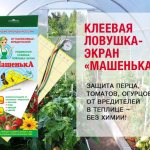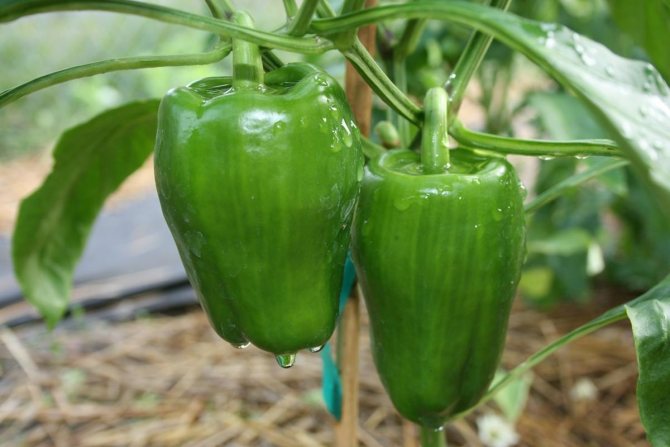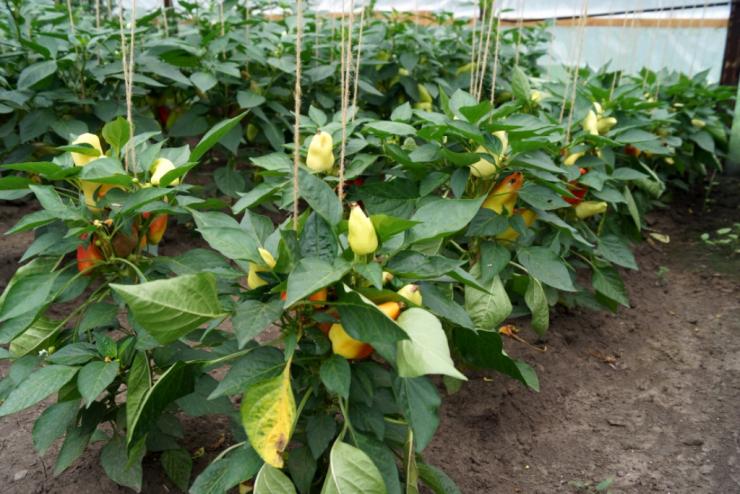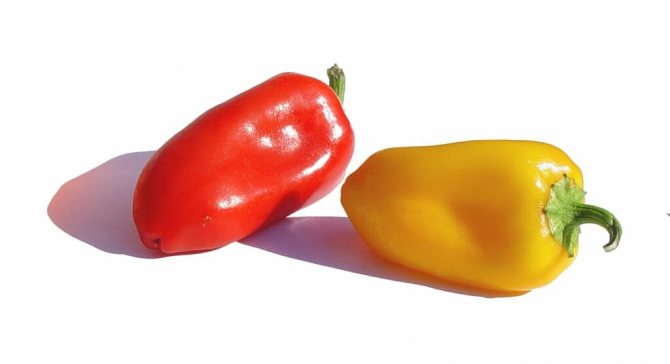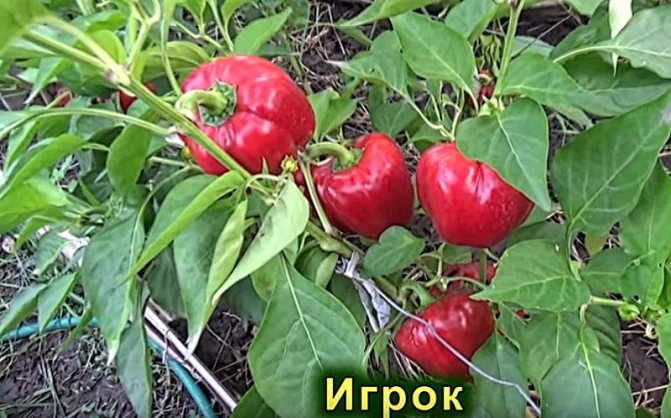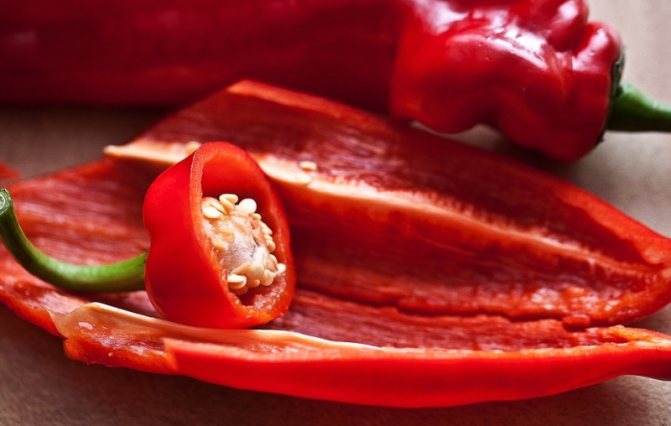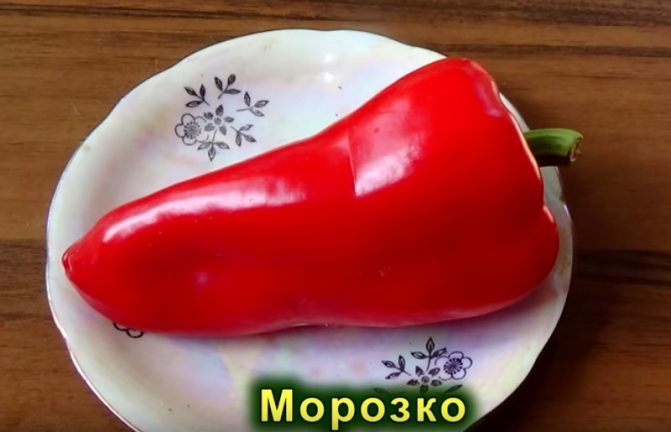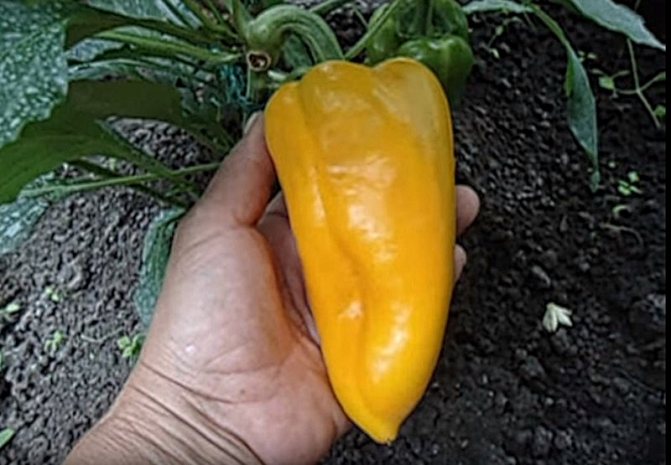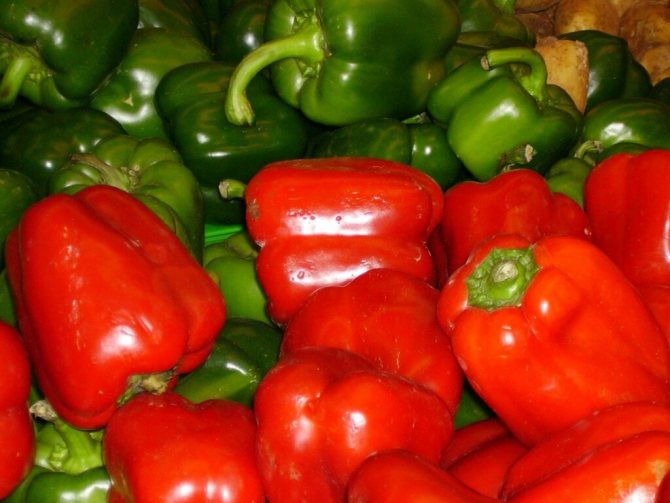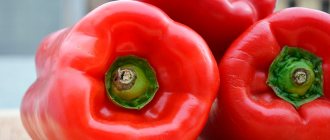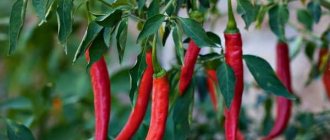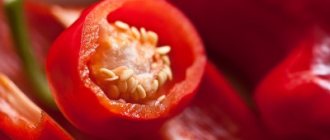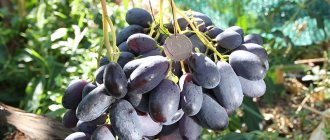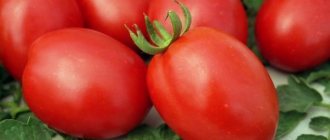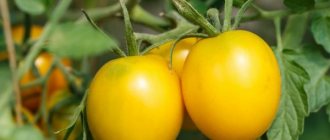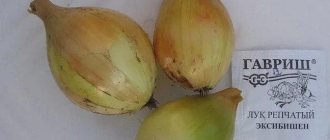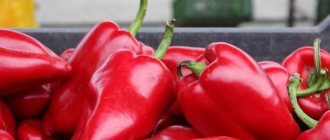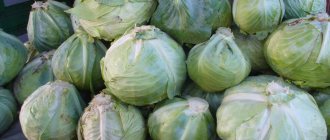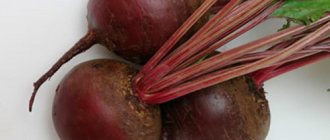The best peppers for greenhouses
It is quite difficult to choose the best varieties of pepper. Every gardener has his own favorites. For more information on how to choose the best peppers for indoor use, see our Greenhouse Sweet Peppers article.
We suggest dwelling on those varieties that give decent yields, beautiful tasty fruits and ripen in a short time.
We recommend the following as the best greenhouse peppers:
- Agapovsky (1995),
- Atlant (2007),
- Bogatyr (1996)
- Star of the East chocolate (2006),
- Mastodon
Agapovsky |
The variety can be called the best for 3 reasons:
- the weight of the fruit reaches 120 g and on nutritious soil it can be even more,
- only 98 days can pass from germination to ripeness,
- it is a very compact plant.
The fruits for such a crumb are very large, have a fancy prismatic shape and a smooth surface with barely protruding ribs.
- When fully ripe, the peppers are scarlet.
- The number of nests varies from 3 to 4.
- The fruits are drooping with a wall thickness of up to 0.7 cm.
The taste is pretty good. The aroma is strong and pleasant.
| TIP The best way to protect tomatoes in the greenhouse from whitefly is the "Mashenka" hanging glue trap-screen. An effective and safe, sustainable way to control pests! |
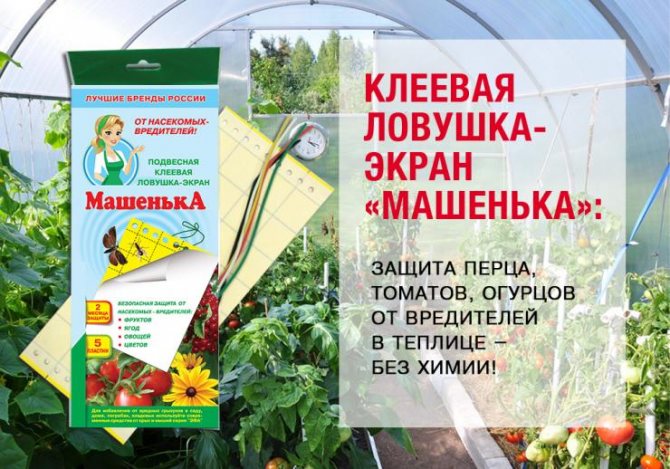
Photo: effective glue trap "Mashenka" against insect pests in the greenhouse
Mastodon |
Harvest Mastodon sweet pepper, combining early maturity with large juicy heavy fruits! Designed for cultivation in unheated and heated greenhouses.
Fruits are large, cuboid, 3-chambered, weighing 200-270 g, 12-13x9-11 cm in size, with a pericarp thickness of 6-7 mm, dark green in technical ripeness, red in biological ripeness.
- From germination to technical ripeness 105-125 days, to biological - 140 days.
- The bush is medium-sized, sparse, 140-180 cm high in unheated greenhouses.
- Planting density 3 plants / m².
It stands out for its stable yield of the crop, high taste. Resistant to tobacco mosaic virus.
Order ptom seeds
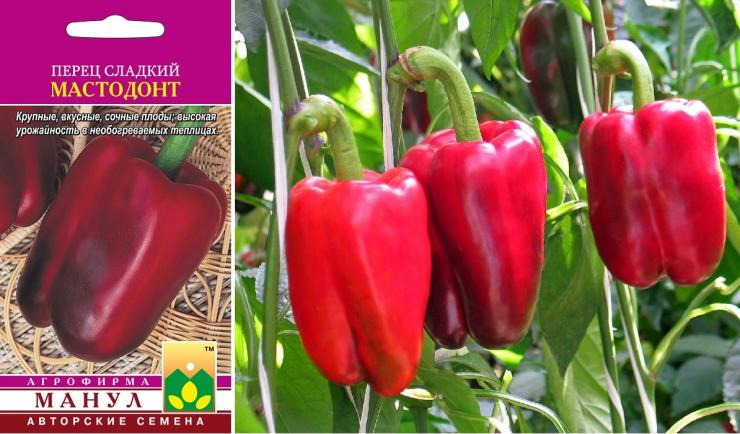

Photo: high-yielding large-fruited variety Mastodon for a greenhouse
Atlant |
The variety has enough advantages to become the best.
- Fruit weight is about 190 g. The taste is wonderful. The variety yields more than 3.5 kg of fruit per 1 m².
- The fruits themselves are drooping, have a cone shape and are distinguished by an increased gloss. In biological ripeness, the fruits become brightly scarlet.
- The sockets can be from 3 to 4. The wall thickness is 5.3 mm.
Peppers are good for consumption both fresh and for preparing any dishes, including hearty tasty preparations for the winter.
Star of the East Chocolate |
The name itself seems to speak for itself. The pepper is delicious, juicy, of unusual color - a real star.
- The mass of ripe dark brown peppers can reach 355 g.
- More than 10 kg of fruit can be harvested from each 1 m².
- All fruits are drooping, cylindrical, 2 or 3 nests.
- Wall thickness approx. 1 cm makes the pepper taste great. At the same time, the aroma is practically not felt.
The fruits are good for stuffing, pickling, in salads, stews, lecho and other dishes. For example, you can try recipes for preparing peppers for the winter.
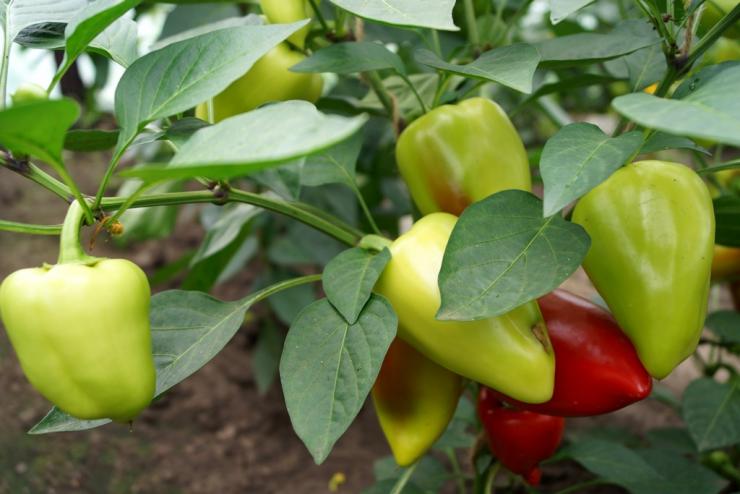

Selection by region
The species is selected based on the climatic conditions of the region. The best varieties of pepper for 2020, depending on the region, are not difficult to choose.For Siberia: Siberian Prince, Siberian Format, Siberian felt boot. All types of pepper are optimal for growing in a greenhouse or outdoors. Merchant, Montero, Pioneer are suitable for the Urals.
On a note! Winnie the Pooh, Health, Medal are cultivated in the middle lane. Early maturing are suitable for growing outdoors.
Each type of pepper has its own characteristics and ripening times. It is necessary to provide the vegetable with the necessary conditions for growth and fruiting.
For Moscow region
The Moscow region has a capricious climate, but it is suitable for some types of pepper. These include Health, Orange Miracle, Atlantic F1 or Agapovsky. Let's study their characteristics.
Table of varieties for cultivation in the Moscow region.
| Variety | Characteristics |
| Health | It gives 5 kg of yield per m2 of soil, grows in the shade and is not afraid of adverse weather conditions. Reaches a height of 1.5-7 m. It is necessary to pinch and form a bush in 1-2 branches. The fruit weighs 40-70 g |
| Orange miracle | One of the most popular. The growing season lasts 100 days after planting, the bushes are medium with a lush crown. Fruits weighing 250-270 g, resemble a cube in shape. The color is yellow-orange. Harvest 14-16 kg per m2 |
| Atlantic F1 | Fruiting already 90 days after planting. The taste is sweet and juicy. The shape resembles an elongated cube. Weigh 450-470g |
| Agapovsky | Accepts any conditions, grows up to 1 meter in height, has a lush green crown, Peppers are dense, weighing 120-130 g. The peel is thick, the pulp has a pleasant aroma |
The climate near Moscow is characterized by high humidity and temperature fluctuations, so care should be taken appropriately.
For the middle lane
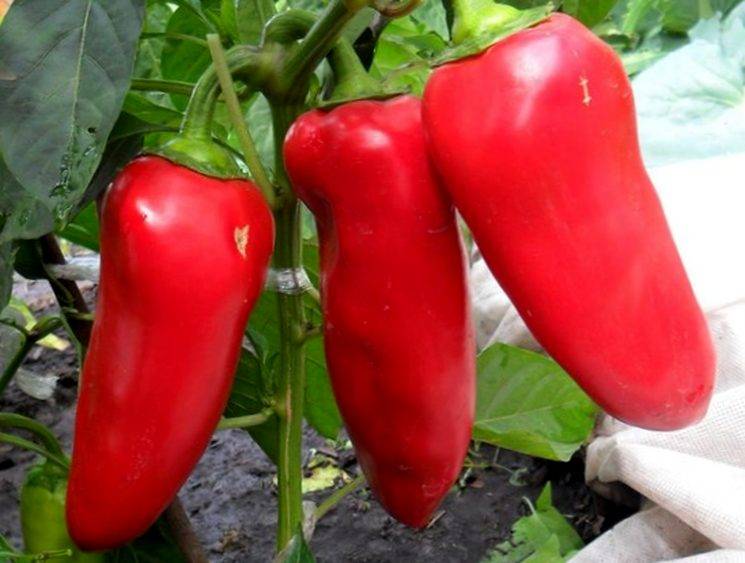

Central Russia is characterized by the features of the climate of such areas as in the Kaliningrad region, Yaroslavl, Tver and other regions. About suitable species in the table below.
Varieties for the regions of the middle lane.
| Variety | Description |
| Lolita | Cultivation is possible in all regions. Mid-season, sprawling bush, cone-shaped fruits. Weight 200-300 g, yield about 6 kg per m2. Not afraid of the vagaries of the weather |
| Mirage | The fruits resemble a cone in shape, the height of the bush is 30-40 cm, the weight is 100-160 g, the length is 10-15 cm. Ripens in 90-95 days after planting, yields 5.5 kg of yield per m2 of land |
| Toddler | Ripens early, the bush is low, semi-spreading, weight 100-150 g, length 8 cm |
These species become accustomed to any climate.
For the Urals and Siberia
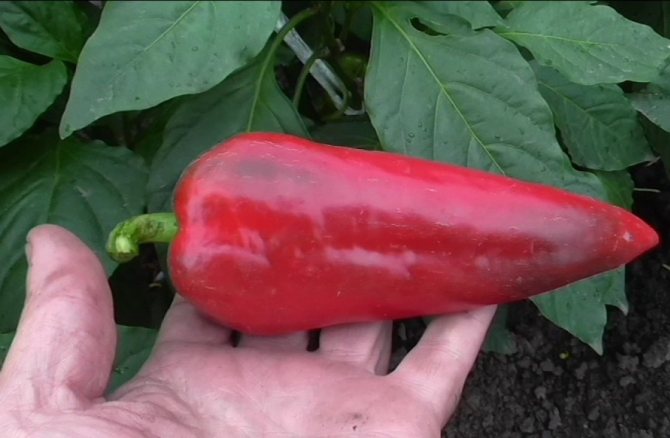

The Urals and Siberia have a special climate, the whims of which are impossible to predict. Here, long winters and short summers. With this in mind, varieties of early ripeness and undemanding care should be selected. More details about suitable species in the table below.
| Variety | Description |
| Atlant | Sweet taste, increased yield, fruits weighing 115-175 g, growing season lasts 130 days, and harvesting can be carried out as early as 115 days after planting. It is not afraid of cold weather and does not require complex care. Yields 3-5 kg of harvest from 1 m2 of land |
| Red or yellow bull | The hybrid is resistant to frost, the fruits weigh 220-270 g, and sometimes their weight reaches 400 g. Length is 18-20 cm. The shape of an elongated cylinder |
| One | Suitable for greenhouse or soil cultivation. The bush grows up to 70-75 cm in height, the fruits resemble a cube, the height of the fruits is 10-12 cm |
| Amber | Differs in bright red color. The shape is like a cone. The fruits ripen 110-112 days after planting. From the site, you can collect 6.5-8 kg |
On a note! The listed names have high immunity to the main spectrum of diseases of this vegetable.
They are also suitable for Siberia. In Siberian conditions, Latino F1, Maria and Fidelio F1 will grow just as well.
Harvest varieties of greenhouse peppers
In the greenhouse, you can create and regulate the most favorable conditions for growing peppers. Suitable temperature, humidity and light conditions, sufficient mineral and organic nutrition will allow you to get record and guaranteed yields.
| The most productive greenhouse varieties of pepper give more than 14 kg of fruit from each 1 m². |
These generous varieties include:
- Atlant (2007),
- Cow's ear (2007),
- Gemini (2007),
- Latinos (2012).
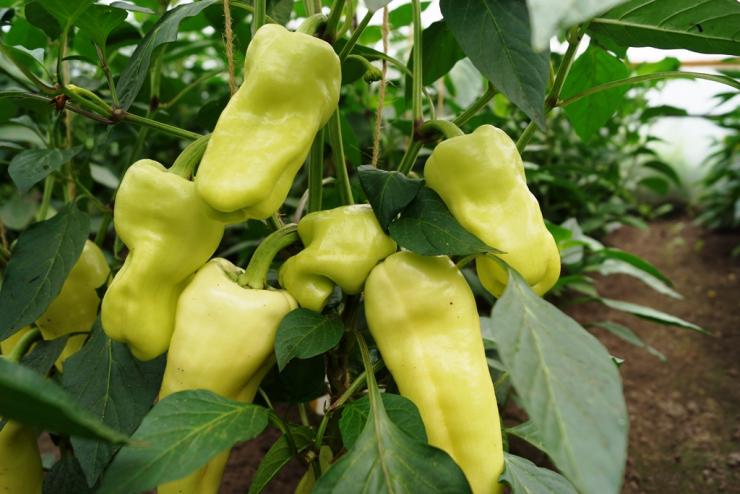

Latinos |
An outstanding hybrid with a fruit weight of 240 g, and maybe more, if you follow all the recommendations of agricultural technology.
- The fruit has a drooping cuboid shape, red or dark red in biological ripeness of color.
- The number of nests varies from 3 to 4.
- With a fruit weight of 240 g, the wall thickness can be slightly more than 1 cm, the yield with this weight is slightly more than 14 kg per 1 m².
The shrub ripens early, slightly spreading and not very tall, the fruit tastes great.
Jackmini |
Ripening period is medium early, the plant itself is semi-sprawling with drooping fruits, cylindrical in shape and glossy in color.
- The variety is distinguished by fruits with a maximum weight of 206 g. At the same time, it is guaranteed to yield 14.3 kg per 1 m².
- The soil for this needs nutritious and complete care according to all the rules.
- In biological ripeness, the fruit is rich yellow.
- The number of nests can be 2 or 3, and the thickness of the fruit wall is about 0.7 cm.
The taste is great. Peppers show all their flavoring qualities both fresh and in any processing.
Cow's ear |
Among the fruitful varieties, this representative has the most modest fruit in size.
- With a mass of peppers of 200 g, the yield is still at least 14 kg per 1 m².
- The variety is characterized by mid-maturity, a spreading bush and a low height.
- Fruits are drooping, shiny, cone-shaped.
- Biologically ripe fruits are bright red.
- The wall thickness is about 0.7 cm.
The taste is wonderful. The fruits are suitable for salads, preparations and hot dishes.
Varieties for central Russia
Thick-walled peppers for central Russia are selected according to the above criteria. It must meet the following requirements:
- resistance to temperature extremes;
- quick return of a mass crop at the stage of technical maturity;
- relative resistance to tobacco mosaic virus, bronzing, apical rot and spider mite;
- high productivity.
Low-growing varieties in the middle lane can be grown in the open field. But they require the installation of supports.
The best varieties are: Marshal Zhukov, Zorka, Montero, Sankina Lyubov, Anastasia, Tusk, Butus, Emelya, Ded Moroz, etc.
Polycarbonate greenhouse peppers
Polycarbonate greenhouses are widespread; they are affordable and popular among summer residents in different regions. Relatively inexpensive, yet strong and durable, they are perfectly suited for growing vegetables even in cold, short, rainy summers. At the same time, a significant disadvantage of polycarbonate greenhouses is the high level of heating in direct sunlight. Therefore, plants intended for cultivation in polycarbonate greenhouses must tolerate elevated temperatures without problems. Do not forget to regularly ventilate the greenhouses.
Among the peppers adapted for hot polycarbonate greenhouses, the following varieties can be recommended:
- Orange miracle (2012),
- Tenderness (1986),
- Night (1999)
- Victoria (1979).
Orange miracle
Early maturing hybrid, small in height. The fruits are drooping, cuboid. Peppers in biological ripeness become rich orange. The number of nests varies from 3 to 4. The weight of the fruit can reach 213 g with a wall thickness of almost 1 cm. The taste is excellent. Productivity is about 10 kg 1 m².
Night
The variety is ideal for growing in any polycarbonate greenhouse. Fresh fruits are most delicious. The variety differs in late ripening, you will have to wait for fruits as much as 135 days from the emergence of shoots after sowing the seeds. This is a standard plant, reaching a height of one and a half meters. The fruits are prism-shaped, with small waves on the surface and barely noticeable ribs. The fruit is weakly curved, has a blunt tip. Peppers in biological ripeness turn red. The number of nests varies from 3 to 4. The weight of each fruit is slightly more than 140 g with a fruit wall thickness of about 0.7 cm.The taste is excellent, but the aroma is practically absent. The yield per square meter reaches 7.4 kilograms.
Victoria
The variety is suitable for growing in a polycarbonate greenhouse. Early ripening: The peppers will ripen in 133 days and take on an interesting light green hue. Plant height rarely exceeds 60 cm. Fruits are of a hanging type, almost perfectly conical in shape and rather smooth. The weight of each fruit can exceed 75 g, and the wall thickness is at around 0.6 cm. The taste of the fruit is very good. The yield is slightly more than 2 kg per 1 m².
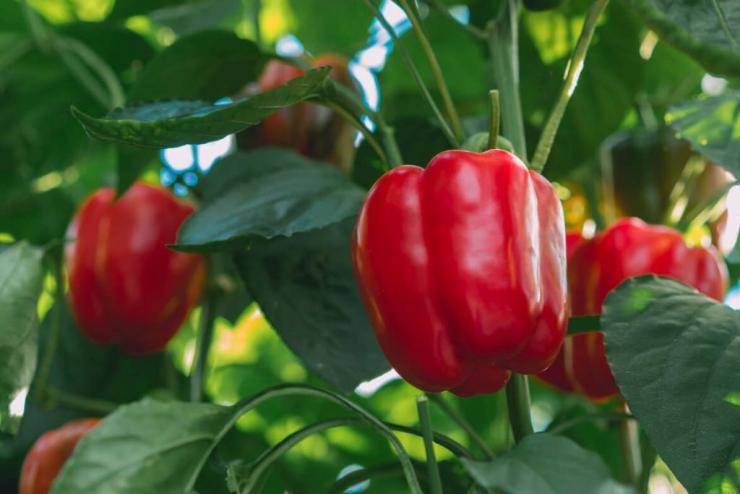

Thick-walled varieties for the Urals and Siberia
Please note that the climatic zones of the Urals and Siberia can differ significantly from each other. There is the Polar Urals, where permafrost predominates, and in principle, it is very difficult to grow something in open ground, and the South Urals. Many crops can be successfully cultivated there without shelter. The situation is similar with Siberia.
There is a special Ural and Siberian selection of thick-walled pepper seeds. It is best to choose thick-walled peppers for Siberia and the Urals from the so-called zoned selection collections - there are many new products for 2020 in them. Pay attention to the offers of local agrotechnical stations. They check the resistance of varieties to adverse conditions inherent in a particular zone.
Thick-walled varieties of peppers for the Urals are: "Victoria", "Flamenco", "King of the North", "Giant Dutch", "Belozerka", "Mercedes", "Alexy", "Health" and many others.
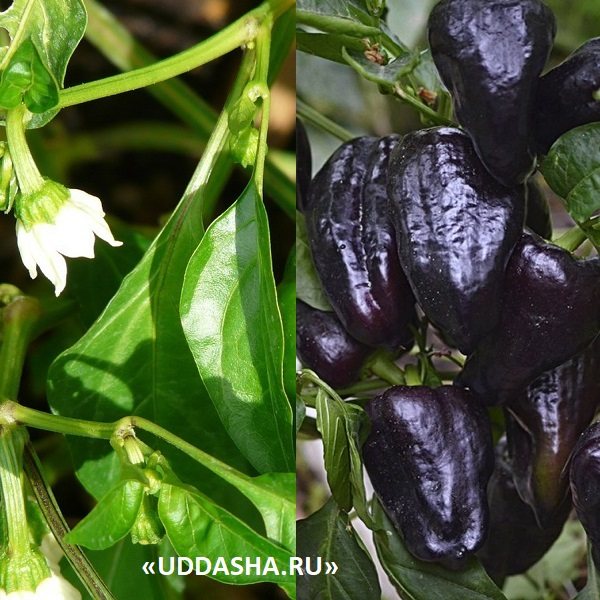

Early greenhouse peppers
By planting the earliest varieties of pepper in a greenhouse, you can expect the first harvest in less than 100 after germination. In the group of early peppers, varieties can be distinguished:
- Agapovsky (1995),
- Yarik (2004),
- Pinocchio (1995)
- Health (1986).
For more information on varieties of peppers for greenhouses with an early ripening period, see the articles "Early varieties of sweet peppers for greenhouses" and "Early varieties of peppers for Siberia"
For more information on how to get an early healthy crop of sweet peppers, how to properly care for and when to plant seedlings in the greenhouse, see Growing early peppers.
Pinocchio
The Buratino variety is the earliest named. The harvest will delight after just 88 days. Semi-determinate plant with large peppers, elongated-cone-shaped with barely noticeable ribbing on the surface, dark green in color. The fruits are drooping, the weight reaches 116 g, and the wall thickness is 0.5 cm. The taste is quite decent. The yield from 1 m² reaches a record of 13.5 kg.
Yarik
For the ripening of this variety, approx. 95 days. It can be eaten both fresh and used in cooking. The plant has a semi-stem type, drooping cone-shaped fruits, glossy and yellow in color. The number of nests can be 2 or 3, and the weight of the fruit reaches 60 g with a wall thickness of 0.4 cm. The taste of the variety is excellent. The yield reaches 4.7 kg per 1 m².
Agapovsky
The variety will delight the first harvest in 99 days. The plant itself is quite compact, the fruits are very large, have the shape of a prism, with a smooth surface, slight ribbing and red color. The fruits on the plant are drooping, the number of nests can be either three or four, and the weight of the fruit on good soil reaches 123 g. The wall thickness is close to 1 cm. The taste of the fruit is very pleasant, a strong aroma is felt. Up to 10.5 kg of fruit can be harvested from each 1 m².
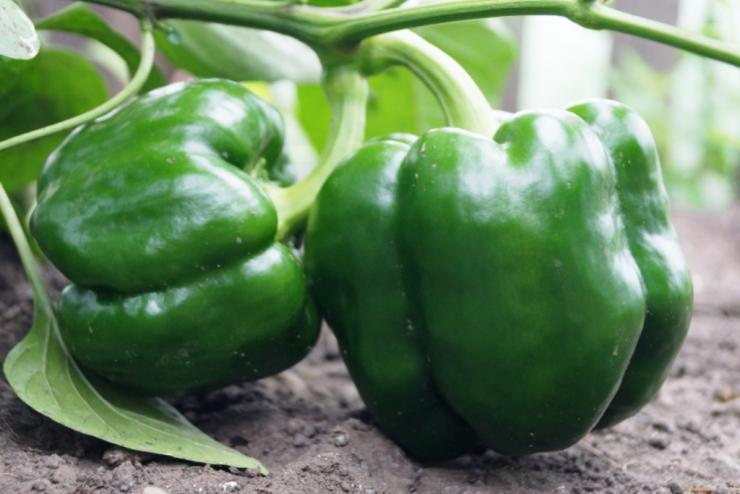

Thick-walled varieties for the Moscow region
The climatic conditions of this zone are unstable. Therefore, when choosing a variety of thick-walled sweet peppers for the Moscow region, you should first decide whether the culture will be grown in a greenhouse or open field. For unprotected soil, it is worth choosing early and ultra-early species, mid-season ones are best left for film shelters.
Suitable thick-walled varieties of peppers for the Moscow region are: "Zlata Praga", "Dandy", "Siberian Baron", "Purple Bell", "Yantar", Kakadu "and many others. When choosing a variety, pay attention to its resistance to various diseases. In the Moscow region, this culture is often affected by vertex rot. Therefore, it is desirable to acquire hybrids with genetic resistance to this disease.
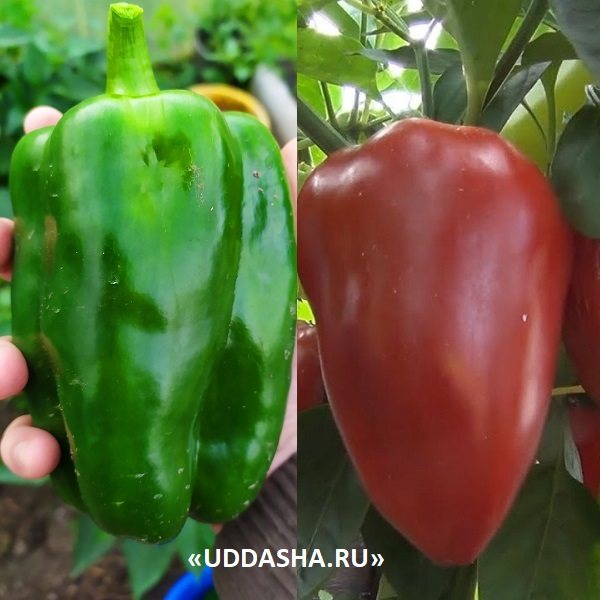

Tall peppers for greenhouses
In tall greenhouses-houses it is convenient to grow indeterminate, unlimited bushes. Among tall varieties, I consider the most successful varieties:
- Merchant (2001),
- Snegirek (1998),
- Medal (1992)
- Flaming (1998).
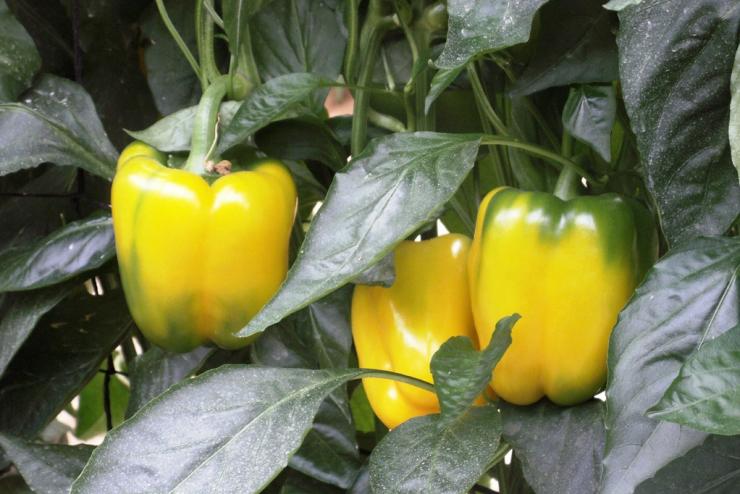

Snegirek
Among tall bushes, it is considered the undisputed leader, growing taller than human height up to 210 cm. An early ripe variety will delight with the harvest after 105 days. The position of the fruits on the plant is drooping, they have a prismatic shape and a smooth surface, glossy in appearance, weakly curved, ribbing is also not pronounced, they have a red color in biological ripeness. There can be from 2 to 4 nests with a fruit weight reaching 125 g and a wall thickness of 0.75 cm. The taste is very good, but the aroma is rather weak. The yield reaches 13.2 kg per 1 m².
Fiery
Slightly lower is the Flame variety "only" 180 cm, although it is also early maturing and its fruits will ripen 102 days after germination. The fruits are also in a drooping state, they have a prismatic shape, slightly wavy, ribbing is very weak. In biological ripeness, the fruits are red with a blunt tip. Fruit weight on good soil can reach 101 g, and the wall thickness can reach 0.6 cm. The taste of the fruit pulp is very pleasant, the aroma is strong and stable. The yield reaches 12.4 kg per 1 m².
Merchant
The merchant is the lowest of the presented group of tall varieties, reaching at the same time at least 85 cm. It is excellent for fresh consumption, for canning, stuffing, etc. It is interesting to try a dietary recipe for peppers with minced vegetables. The fruit itself is drooping, has a cylindrical shape and a smooth, glossy surface. In biological ripeness, the fruit is red. The number of nests can be from 2 to 3, and the wall thickness can reach almost 1 cm. The maximum fruit weight on good soil often exceeds 130 g. The fruits are very tasty and have a pleasant aroma. Productivity from 1 m² reaches 3 kg.
The subtleties of growing thick-walled peppers
In general, you can read about the agricultural technology of bell peppers in a special article on our website. But there are certain subtleties in the cultivation of thick-walled varieties.
The first thing thick-walled peppers need is soil neutrality. With a high degree of acidity, this culture will not grow and develop. Remember the rule. For 1 m2 of soil intended for growing this crop, it is required to add 5 kg of dolomite flour.
The second important condition is the introduction of a large amount of potassium at the stage of preparing the soil for planting seedlings. Do not add ammonium nitrate - it will stimulate the growth of large deciduous mass and delay the process of fruit set.
The third trick is that 2 weeks after planting the seedlings at a permanent place of growth, it is necessary to start regularly spraying with a solution of boric acid. 1 g per 1 liter of water. Spray the entire bush with abundant wetting of the foliage every other day. This will stimulate the formation of a large number of fruits.
After the fruits have set, you need to start making regular feeding. Typically, the procedure is as follows. 5 liters of water is poured onto 1 bush. Then mineral or organic liquid fertilizer is applied and 5 liters of water is poured out again. Then the soil is loosened and a 5 cm layer of mulch is laid on top of it.
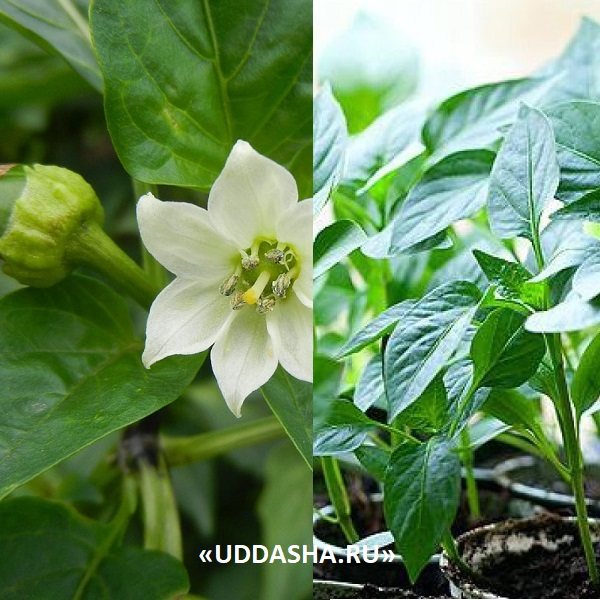

The most productive early maturing species
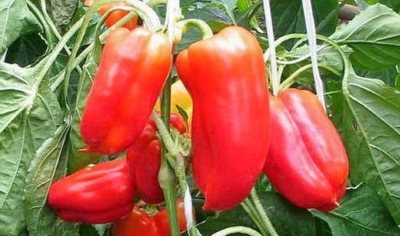

- Miracle tree... The first fruits of the hybrid in the greenhouse ripen at 90 days. Productivity from one bush up to 6 kg per season.
- Orange miracle... Ripening of the first fruits for 100 days.with proper care, up to 12 kg of peppers can be harvested from one bush per season.
- Merchant... Vegetation period - 100 days Harvest - up to 6 kg.
- Agapovsky... The first fruits ripen on day 99. Productivity up to 13 kg per square meter of planting.
- Pinocchio... The yield reaches 13 kilograms per square meter.
- Belladonna... The growing season is 80-90 days. Up to 20 kg of crops are harvested from a square meter of plantings.
We recommend that you familiarize yourself with our materials about such varieties of pepper as: black, allspice, Gogoshary, Flight, Latino, Kolokolchik, Khalif, Livadia, Pompeo and Admiral F1.
In this article, you learned how to choose the right thick-walled pepper seeds for your region. You will definitely get a full harvest of bright, tasty and healthy fruits containing iron, silicon, vitamins C and P. Provide yourself with fresh peppers and various preparations for the winter.
Planting seedlings in open ground
The predecessors of this beautiful culture in the beds can be:
- cabbage;
- cucumber;
- onion;
- carrot;
- zucchini.
Potatoes and tomatoes, on the other hand, take those components from the soil that are extremely important for any kind of pepper; after them, pepper cannot be planted.
About a week before planting seedlings or seed, the land will have to be disinfected. To do this, use a solution of copper sulfate in water (1 tablespoon per standard bucket).
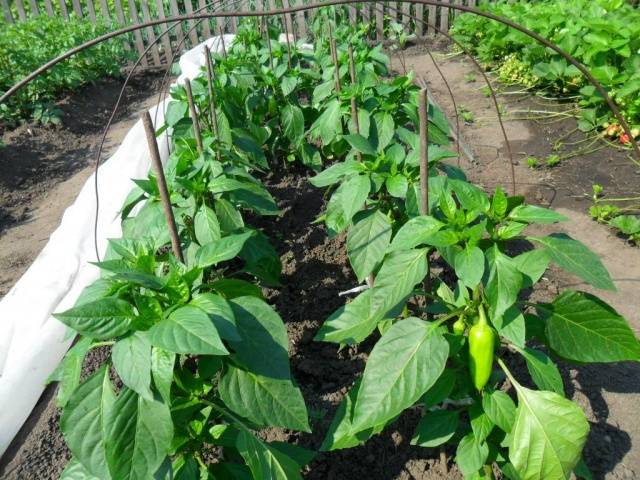

The ground should be warm, well warmed up. Each plant is taken from a glass and planted in a finished hole, without deepening or pressing down in the region of the root neck. The looseness of the soil is very important.
Another important nuance: try to plant different varieties of peppers at a distance from each other, as they can become dusty. What does it mean? By planting peppers of different varieties close to each other, the taste of one may eventually overpower the taste of the other variety or hybrid. This is especially true when planting a sweet and bitter variety next to it.
For cool climates and short, warm summers, try to build tall beds of at least 25 centimeters for the pepper. During growth, the culture will need to be tied up and fed. You can do this using a standard nettle infusion (1 part of the plant for 10 parts of water is insisted for exactly two days).
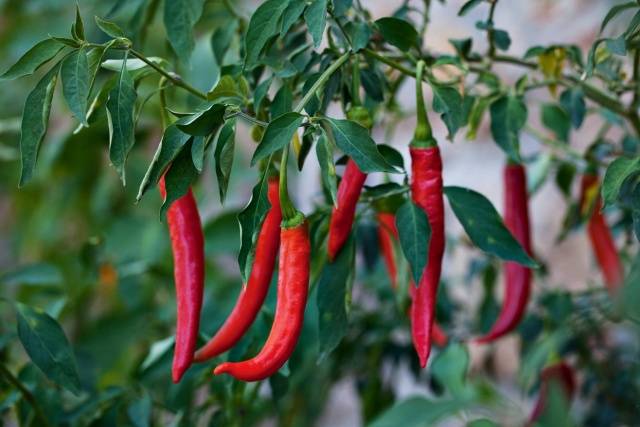

Can I take seeds from store peppers?
A very common question from summer residents is whether it is possible to take seeds from store peppers for growing on the site. Indeed, the stores sell excellent thick-walled, fleshy bell peppers in winter. They have good taste and can be stored for a long time without processing. All in all excellent properties. But is it possible to grow a full-fledged crop from seeds obtained from such fruits?
Yes, you can. I have carried out such experiments many times. I can tell you a secret that every year on my site there are more than 20 bushes of peppers grown from such seeds. Their yield is above average. They retain all the properties of fruits purchased in the store. Unfortunately, I have no experience in growing from seeds already collected from these plants.
So experiment. Good luck with the new season.

